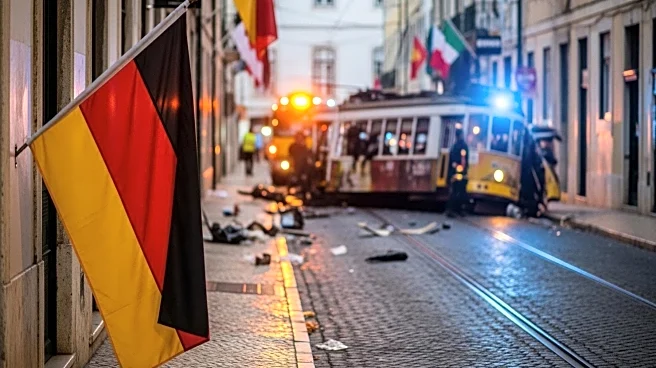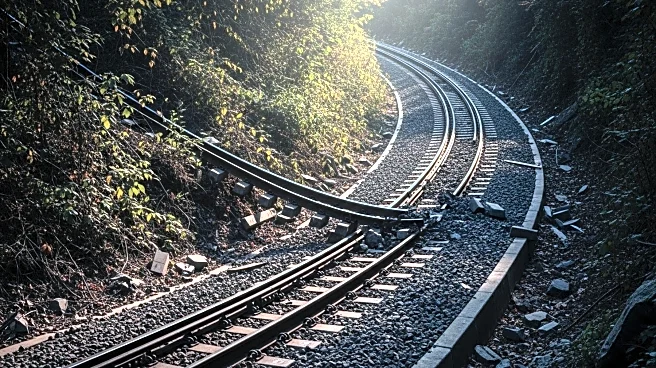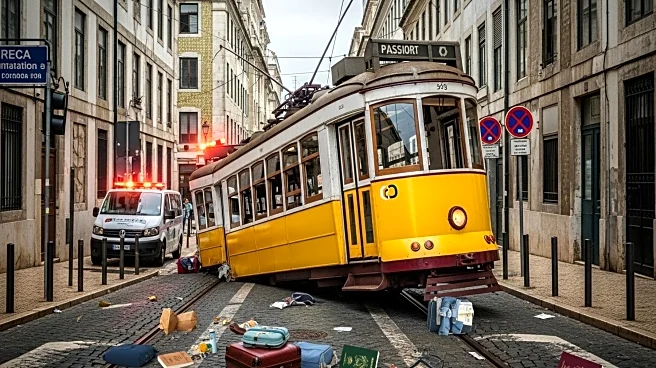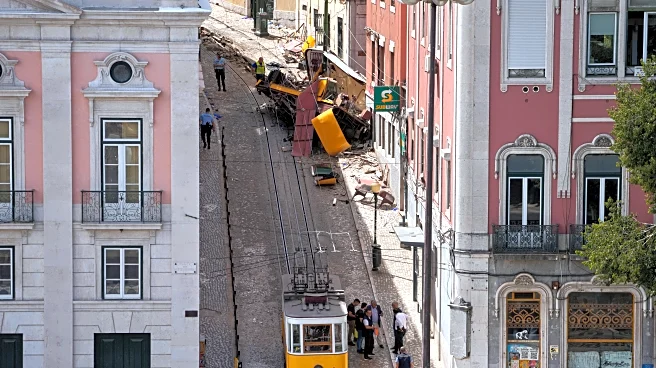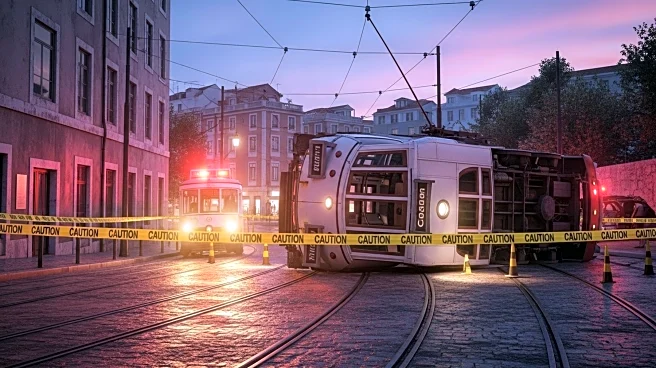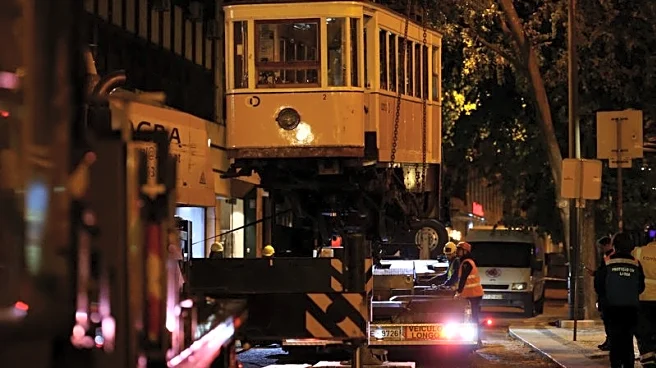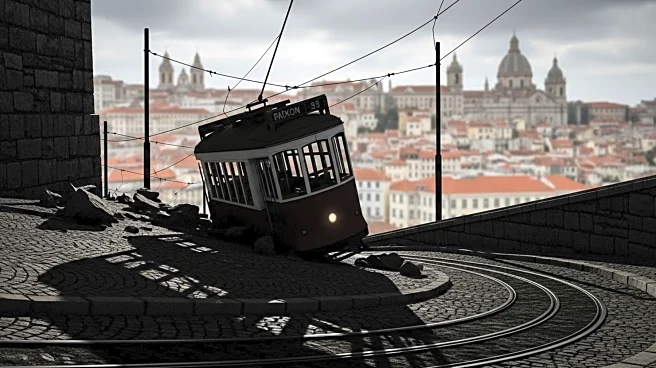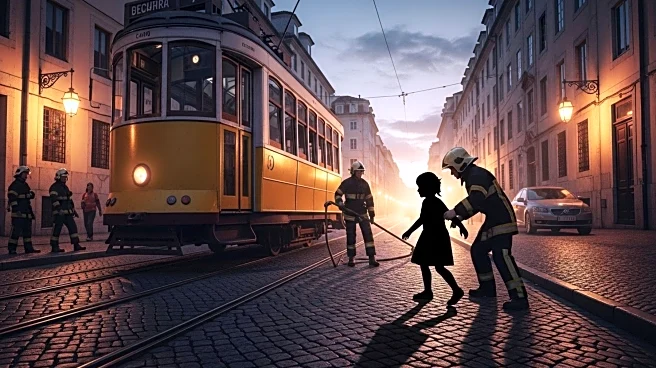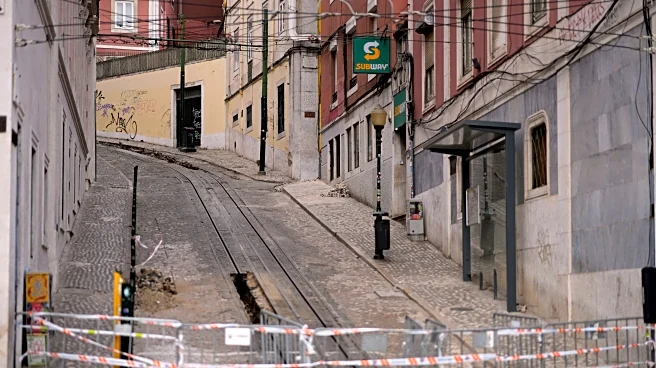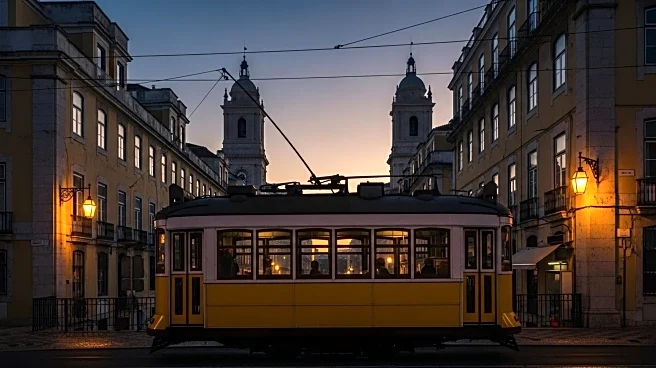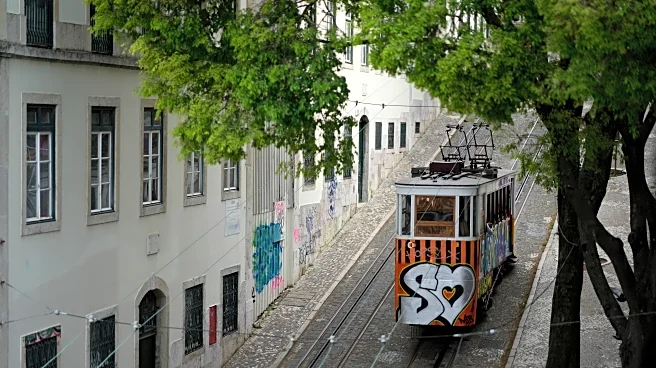What's Happening?
A tragic streetcar crash in Lisbon has resulted in the death of 16 individuals, including 11 foreigners, and injured over 20 people. Among the victims was a three-year-old German boy who was rescued from the wreckage, while his father was killed and his mother remains in critical condition. The crash involved the Elevador da Glória, a national monument, which derailed and crashed into a building. Portuguese police have identified the deceased, which include nationals from Portugal, Britain, Canada, South Korea, the United States, France, Switzerland, and Ukraine. Investigations are underway by the Office for Air and Rail Accident Investigations and the police, with preliminary reports expected soon.
Why It's Important?
The crash has significant implications for Portugal's tourism industry, as the Elevador da Glória is a popular attraction for both locals and international visitors. The incident raises concerns about the safety and maintenance of historical transport systems, potentially affecting public confidence and tourism revenue. The tragedy has also prompted a national day of mourning, highlighting its impact on the Portuguese community and the international victims involved. The event underscores the need for rigorous safety inspections and could lead to policy changes in transport safety standards.
What's Next?
Authorities are conducting thorough investigations to determine the cause of the crash, with reports expected in the coming weeks. The Lisbon City Council has suspended operations of similar streetcars for immediate inspections. The company operating the streetcars, Carris, is also conducting its own investigation. The findings may lead to changes in maintenance protocols and safety measures. The international nature of the victims may prompt diplomatic discussions and support for affected families.
Beyond the Headlines
The crash highlights the ethical responsibility of maintaining historical transport systems while ensuring modern safety standards. It raises questions about the balance between preserving cultural heritage and ensuring public safety. The incident may lead to increased scrutiny of historical transport systems worldwide, influencing how cities manage and maintain such attractions.
